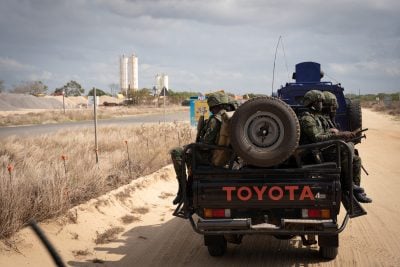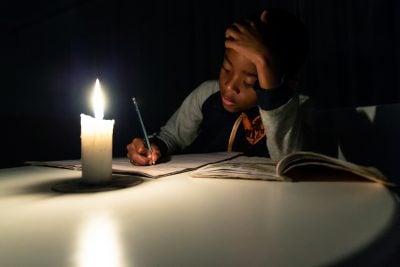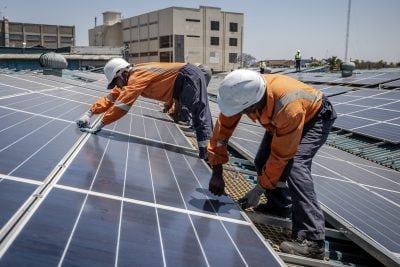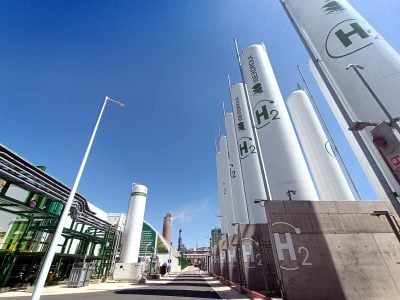Of particular importance for Africa is the critical nexus between water, food and energy. Water availability, access and optimal use are essential for transforming a vicious cycle of insecurities into a virtuous upward spiral towards inclusive growth.
The UN says that currently, only 5% of Africa’s potential water resources are developed and average per capita storage is 200m3 compared to 6,000m3 in North America. Furthermore, only 5% of Africa’s cultivated land is irrigated and less than 10% of its hydropower potential is utilised for electricity generation.
In 2012, three years before the end of the MDGs, on average about 36% of the population did not have access to improved water resources and 70% still did not have access to improved sanitation.
In 2006, the African Development Bank estimated that access to water supply and sanitation in Africa were 64% and 38%, respectively. Globally, 780 million people lack access to safe drinking water and 2.5 billion lack improved sanitation.
On average, in rural Africa, women spend 26% of their time collecting water, which often means time spent walking five miles or more to the nearest water source.
According to the World Health Organisation (WHO), every $1 spent on water and sanitation generates a return of $4 in saved time, increased productivity and reduced health costs in Africa.
More people die from contaminated water than from all forms of violence combined, including wars.
In addition to these statistics, the UN adds the observation that climate variability and change is likely to hold back progress in managing Africa’s water resources. It calls for greater regional cooperation, especially due to the multiplicity of trans-boundary water resources (more than 80 international river basins and aquifers) that must be managed coherently and equitably to meet continental and national goals.
A serious threat to Africa is the likelihood of rising sea levels. A number of studies have highlighted the fact that with many millions of people living on Africa’s coastline, in metropolises such as Lagos, Dar es Salaam and Durban, Africa is vulnerable to even a modest sea-level rise.
Not only would a sea-level rise endanger human habitations, but agricultural land in proximity to the littoral would be threatened by saline water.
Losing just 1% of the present continental ice shelf, it is estimated, would raise sea level globally by about 75cm and lead to a profound impact on coastal communities. This is another reason why COP21 should do everything in its powers to reach an agreement to limit global warming and thereby keep sea-level rises to a manageable level.
The prospects of harnessing water resources for development could be a game-changer for Africa. For example, building the Grand Inga Dam project on Africa’s largest waterway, the River Congo, represents a possible answer to Africa’s energy shortfall.
Costing an estimated $80bn, and producing 40,000MW, the Grand Inga Dam scheme has yet to be given the green light, but South Africa has agreed to commit to an off-take of 2,500MW, and the World Bank is said to have demonstrated interest in coordinating the finance.
Africa has another huge asset. In 2012, scientists from the British Geological Survey and University College London in the UK published research they had conducted that disclosed the existence of a mammoth African aquifer. The volume of groundwater is estimated to be 0.66 million km3, more than 100 times the annual renewable freshwater resource, and 20 times the freshwater stored in African lakes.
As the largest and most widely distributed store of freshwater in Africa, this groundwater can provide an important buffer to climate variability and change.
However, the scientists have cautioned against a wholesale exploitation of the aquifer. What is really required is further research to establish how to manage this natural resource.
Its potential is dependent on developing the infrastructure and expertise for harnessing the abundant water it contains for the purpose of irrigation, power generation, domestic use and supplying water to value-adding industries.
Securing the finance at COP21 from the international community, to undertake such research, probably would represent a major achievement for Africa. And initiating a paradigm shift from a sole focus on trade between African nations, to joint planning and water resource development, would be significant progress.
Coca Cola
Each and every day waterborne diseases kill Africans. Coca Cola believes that while no single institution can prevent these tragedies, business can work with government, NGOs and civil societies to develop sustainable solutions.
Consequently, Coca Cola has backed the Replenish Africa Initiative (RAIN) that is aiming to improve access to clean water for two million people in Africa. The company has made a six-year, $30m commitment and is currently working in 35 of the 55 African countries, securing investment in clean water access, improving water and sanitation for school children, replenishing more than 2bn litres of water each year for communities and nature, and empowering women through clean water access and entrepreneurship.
In the last six years, RAIN has reached more than a million people with sustainable clean water access, helping Africa meet the UN Millennium Development Goal on water and sanitation.
RAIN projects address the specific water issues in target communities by focusing on improving access to water and sanitation and promoting hygiene; establishing or enhancing sustainable water management practices; and promoting the efficient and sustainable use of water for economic development.
Diageo
In April this year, Diageo, the global alcoholic beverages company, announced an ambitious strategy for water stewardship. With water a pressing business and global issue, the Water Blueprint recognises the responsibilities of operating in water-stressed areas and explains how Diageo intends to support the sustainability of the water resources on which the company, its employees and customers as well as the broader community rely. Diageo’s Water Blueprint and progress towards all of the targets, are essential parts of Diageo’s long-term plan, not just in enabling sustainable operations but also in creating opportunities for growth.
Diageo’s Water Blueprint complements its pan-African Water of Life programme that was initiated in 2006, and which brought safe drinking water to more than 10 million people. The launch of the Water Blueprint strategy this year will help Diageo focus further on water use in the supply chain, with one of the company’s key targets being to equip its suppliers with the tools to protect water sources in water-stressed areas. The company states that its targets reflect the need to better manage water stewardship and carbon emissions across its whole supply chain.
Want to continue reading? Subscribe today.
You've read all your free articles for this month! Subscribe now to enjoy full access to our content.
Digital Monthly
£8.00 / month
Receive full unlimited access to our articles, opinions, podcasts and more.
Digital Yearly
£70.00 / year
Our best value offer - save £26 and gain access to all of our digital content for an entire year!
 Sign in with Google
Sign in with Google 



